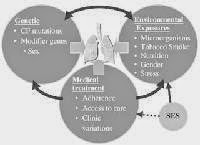What NURSES can do for PATIENTS!
Overall Assessments and Possible Findings:
|
System
|
Assessment
|
Clinical Manifestations
|
|
Respiratory
|
|
|
|
Gastrointestinal
|
|
|
|
Integumentary
|
• Color
• Nails • Peripheral pulses |
|
|
Growth and
Reproduction
|
|
|
Taken from NCLEX review website:
http://www.atitesting.com/ati_next_gen/FocusedReview/data/datacontext/RM%20NCC%20PN%207.1%20Chp%2019.pdf
Interventions again:
Nursing Care of Children
-
∆ Respiratory Interventions
-
Promptly treat respiratory infections with antibiotic therapy.
-
Provide pulmonary hygiene with chest physiotherapy (CPT)
-breathing exercises to strengthen thoracic muscles
- minimum of twice a day (in the morning and at bedtime
-
Have the child use the Flutter mucus clearance device to assist with mucus
removal.
-
Administer bronchodilators through metered dose inhalers (MDIs) or
hand-held nebulizer to promote expectoration of excretions.
-
Administer dornase alfa (Pulmozyme) through a nebulizer to decrease
viscosity of mucus.
VERY IMPORTANT:
*Promote physical activity that the child enjoys to improve mental well-being, self-esteem, and mucus secretion
-
Promptly treat respiratory infections with antibiotic therapy.
-
∆ Gastrointestinal Interventions
- give pancreatic enzymes with meals and snacks
- capsules can be:
- swallowed whole
- opened to sprinkle the contents on a small amount of food.
MEAL TIME
-
◊ Encourage the child to select meals and snacks if appropriate.
-
◊ Facilitate high-caloric, high-protein intake through meals and snacks.
-
◊ Multiple vitamins and water-soluble forms of vitamins A, D, E, and K
are often prescribed.
Hospitalization
-
Perform CPT 1 hr before meals or 2 hr after meals if possible.
-
Use oxygen with caution to prevent oxygen narcosis.
-
Promote adequate nutritional intake, and provide pancreatic enzymes at
meals and with snacks.
-
Encourage adequate fluid and salt intake.
-
Provide meticulous skin care and oral hygiene.
-
Provide encouragement and support to the child/family by using
family-centered nursing care.
Care in the Home
-
Ensure parents/caregivers have information regarding access to medical
equipment.
-
Provide teaching about equipment prior to discharge.
-
Instruct parents/caregivers in ways to provide CPT and breathing exercises.
For example, a child can “stand on her head” by using a large, cushioned chair placed against a wall.
-
Administer antibiotics through a venous access port.
Parents/caregivers need instruction in administration techniques, side effects to observe for, and how to manage difficulties with the venous access port.
-
Promote regular primary care provider visits.
-
Ensure up-to-date immunizations with the addition of initial influenza
vaccine at 6 months of age and then a yearly booster.
-
Encourage regular physical activity.
- Encourage participation in a support group(s) and involvement in community resources.
Primary Reference:
Hockenberry, M., Wilson, D., Winkelstein, M. (2005). Wong’s essentials of pediatric nursing care. (7th ed.). St. Louis, MO: Mosby.
AND HAVE FUN!
OTHER NURSING CARE RESOURCES: ie: for student nurses
Hockenberry, M., Wilson, D., Winkelstein, M. (2005). Wong’s essentials of pediatric nursing care. (7th ed.). St. Louis, MO: Mosby.
AND HAVE FUN!
OTHER NURSING CARE RESOURCES: ie: for student nurses
- http://www.istudentnurse.com/peds/cf/
- http://www.elsevier.com/__data/promis_misc/2005.pdf
- http://www.nursingtimes.net/the-role-of-the-cystic-fibrosis-nurse-specialist/206445.article
- http://depts.washington.edu/pedspulm/cfcenter.htm






